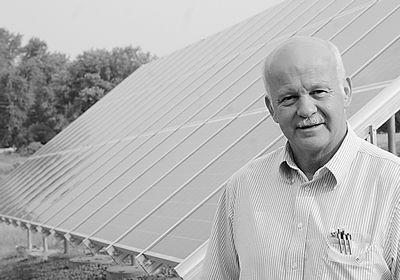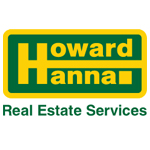Subscriptions
Menu
Advertisements
Solar greens up Valley
7/24/2012 |
By Jim Poole |

With its lush farmland, the Schoharie Valley's been green for centuries.
Now it's even greener.
When Schoharie physician Joe Luz spearheaded a project to have Bassett Healthcare's Schoharie Center convert to solar electricity, he joined a small group of neighbors who picked up the trend.
The Schoharie Center went on line in February. Schoharie
Valley Farms, just across Route 30 from the Center, went solar last year; several neighbors also installed solar power.
"We're our own little hotspot here in Schoharie," Dr. Luz said.
Going green was a key factor for Dr. Luz, who said he's been interested in alternative energy for years.
"The energy from the sun is clean and it never runs out," he said. "The environmental effects are clear."
It's the same for Richard Ball, owner of Schoharie Valley Farms. His system was installed in 2011, so this is the first full year of its use.
"Who can argue with going green?" Mr. Ball asked. "It was certainly a factor. Philosophically, it's the right thing to do."
There's another green factor involved, however--money. Both men said that if the economics didn't work, they probably would have stayed with conventional power.
The solar electric systems use large panels that convert sunlight into electric current instead of heat.
Schoharie Valley Farm's large, double array of panels are to the south of The Carrot Barn. The Schoharie Health Center's are just above the office.
Both systems are connected to the power grid, so they maintain power when the sun isn't shining.
Mr. Ball said his winter electric bills were one-third of what they were before; in summer, about one half. Those are big numbers because of the large refrigeration units used to store vegetables on the farm.
The Schoharie Health Center's system will provide all the electricity it needs, and then some. The extra power produced gets sold back to the grid.
Dr. Luz said the system--believed to be the only one in the Bassett Network--will save as much as $21,000 over the next 10 years.
"Like other businesses, health care has its economic challenges," he said. "If you can save a little, why not?"
Mr. Ball agreed, adding that before going solar, he had installed timers to regulate cooling and had altered electric workloads through the day to reduce costs.
"But you can only conserve so much," Mr. Ball said. "We had to try something else."
Neither project was cheap. Dr. Luz estimated the Health Center installation was $115,000 to $120,000. Mr. Ball said his system cost about $500,000.
But again the numbers worked. Schoharie Valley Farms is receiving three grants that will cover about 65 percent of the cost. Dr. Luz also secured grants. Those, along with tax credits, will pay about $92,000 of the Center's costs.
"But the grants aren't there all the time," Mr. Ball said of the state and federal funding. "We felt we had to take advantage of them."
Dr. Luz agreed.
"If somebody's going to give you a gift horse. . .you better take it," he laughed.
Each man took a different path to reach solar power.
Bill Jordan, Mr. Ball's longtime friend, advised him and helped pick reputable contractors to install his system.
"It's a difficult business, a new business," Mr. Ball said. "You don't know whether a company in it today will be in it tomorrow. Bill helped us sort through it all."
Doing his own research, Dr. Luz wanted to be sure the products used in the Center's system were American-made.
That goal was met, he said, and in contrast with conventional belief, the American components were cheaper than those made abroad.
"I just felt it was the right thing to do," Dr. Luz said. "If we're getting federal grants for this, shouldn't we use American products?
"What good is a green economy if you don't have Americans doing it?"









